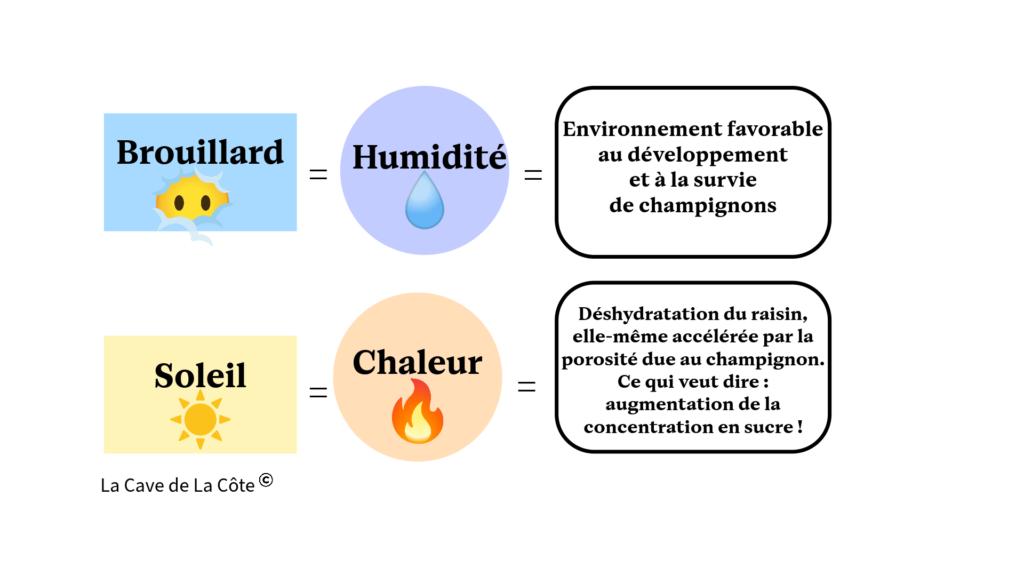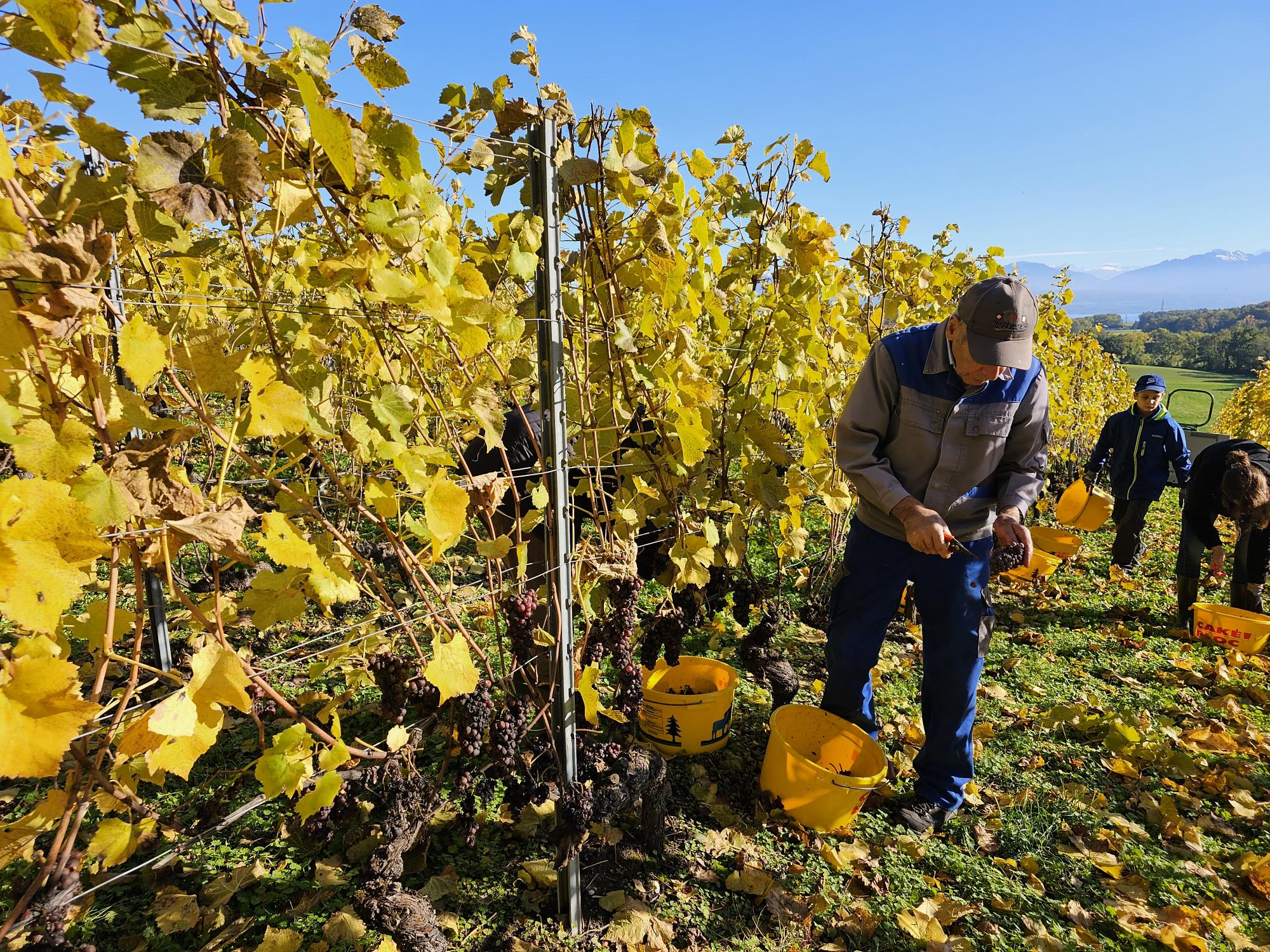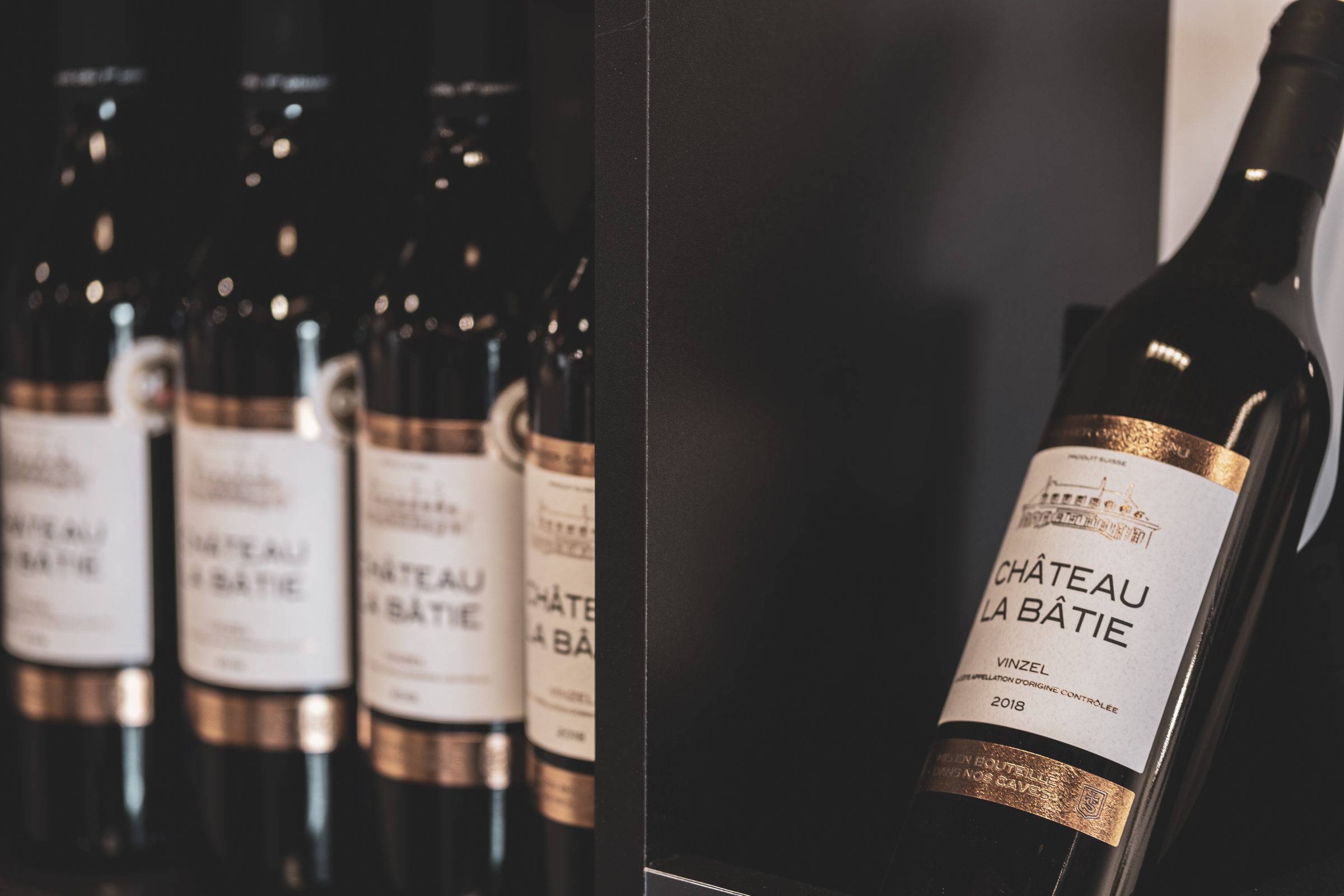This week, we made the final pruning cuts on our La Saint-Martin Pinot Gris on a beautiful sunny day :

And if these harvests come later than others, it’s to give the botrytis fungus time to settle in the berries.
That’s why it’s called :
Botrytised grapes, what are they ?
Indeed, botrytised grapes are the result of a fascinating natural process! This phenomenon occurs when the fungus Botrytis cinerea (also known as noble rot) affects the grapes on the vine.
Thanks to its action, the skin of the grape is attacked, and the sugars and acidity condense, increasing the mellowness of the future wine.
Contrary to what you might think, this ‘rot’ is actually beneficial and creates ideal conditions for the production of some exceptional wines.
→ Botrytis is therefore a fungus, which will impact the fruit to give even more sugar!
But be careful, for the grape to be botrytised :
Certain weather conditions are necessary.
How important are humidity and sunshine? ☀️
Saint Martin’s Day is exactly the time when the morning fog allows botrytis to proliferate. Sunny afternoons, on the other hand, allow the grapes to concentrate their sugar and aromas. This creates a favourable environment for the fungus to grow.
And because the grapes stay on the vine longer than usual, the fungus is able to concentrate the berries’ natural sugars.

This is known as late harvesting. And Pinot gris lends itself perfectly to this exercise: its dense, heavy aromas make it a popular wine when the nights get longer and the need for sweetness fills a cold, hostile exterior.
If all the conditions are right, then the fungus will probably be able to appear and start its work!
Then comes the selection of the berries (which is a very delicate operation…)! The harvesting teams have to make a very rigorous selection on the vine, since :

Only the grapes with the best potential are kept for ageing !
That’s why Cave de la Côte has been harvesting grapes from a single plot for years.
The botrytised grapes are harvested exclusively by hand!
And it’s all this work that has been done at Villars sous Yens to produce our Pinot Gris de La Saint-Martin passerillé.
The golden-brown berries have caught one last flash of November light before sinking into the depths of the Morges cellar where, after a day’s maceration, they will patiently ferment over a long winter.
They will be reborn after this unchanging process in the form of a soft, gentle wine that will bring the sparkle of the St Martin’s summer to your Christmas table as a worthy accompaniment to foie gras or a shared sweet treat.
We are proud to announce that our wine was recently awarded a gold medal at the prestigious Mondial du Pinot 2023.
You can discover this beautiful bottle by visiting our e-shop :
